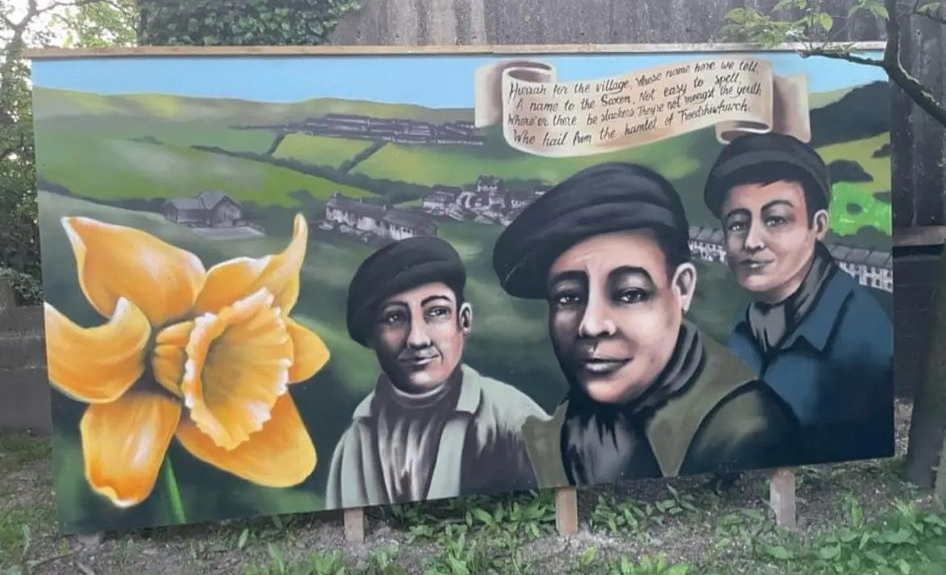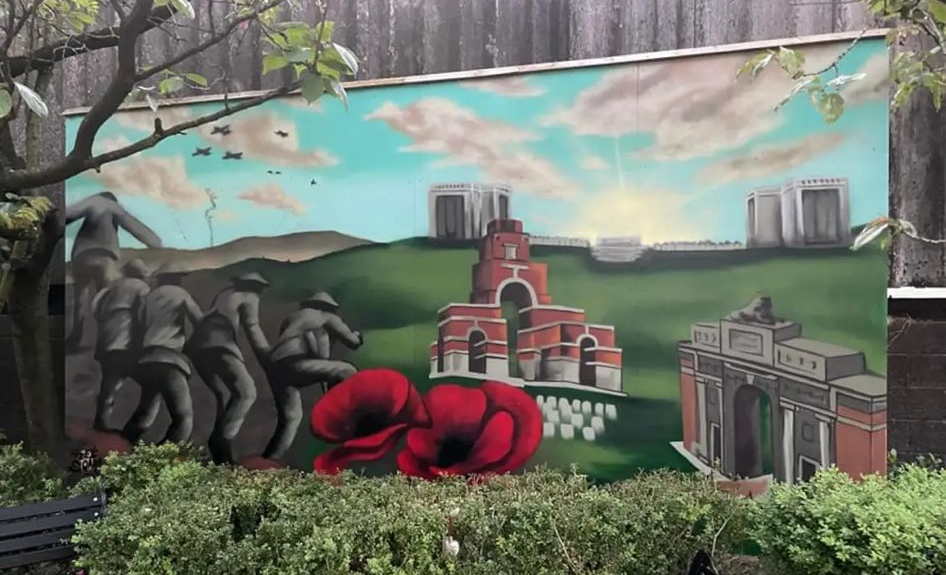The Memorial Garden
This memorial garden stands on the site of St Teilo’s Church. It and the mural (funded by Caerphilly RDP & WG LEADER Fund) commemorate the lost village of Troedrhiwfuwch (which stood here from 1850-1986). It pays tribute to the unique history and sacrifice of the village in WW1, where from 94 households, 110 young men left for the First World War, more than 1 per household. This was the second greatest concentration of war service enlistment in the country for the size of the small community, which totalled 600 – a commitment and sacrifice recognised by King Edward VIII, when he toured the South Wales Valleys, in 1936. Most of the village structure was demolished by 1986, and today only two houses and the war memorial and garden remain as a sign of the community and place that Troedrhiwfuwch once was.
The average age of men who died in World War 1 was 22, and only four have known graves, this garden and mural therefore symbolises a respectful tribute to their memory and brave sacrifice.

The Mural
Paentiwyd y murluniau gan yr artist lleol Tee2Sugars
Mural 1 (left)

At the start the left-hand image represents the village and men of Troedrhiwfuwch pre WW1. Many of the men were employed as miners in local collieries. There was an enlistment campaign following the outbreak of war in August 1914, and a record number of men enlisted from Troedrhiwfuwch (110 men from 94 houses). The verse on the board is taken from a much longer poem about the bravery of the village (author unknown) that appeared in the Western Mail January 1915.
"Hurrah for the village whose name we can now tell
"A name to the Saxon not easy to spell
"Where ere there are slackers
"They are not amongst youths
"Who hail from the hamlet of Troedrhiwfuwch
"From 94 houses, one hundred and ten
"Is the number recruited of gallant young men."
Mural 2 (right)

The right-hand mural depicts the theatre of war during WW1, with a representation of men 'going over the top' from the trenches. Only four men from Troedrhiwfuwch, listed on the war memorial have known graves, the remainder are listed on the panels of the large European war memorials, for example, Menin Gate, Mons and Thiepval.